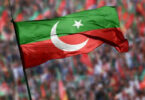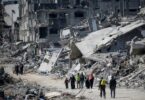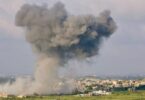Husamettin Inac
Social movements many times can drastically change national identities and perception of life. Even upheavals and social turmoil can accelerate this kind of identity transformation and waving. The movements in the Middle East are obvious examples of this. These movements, which appeared against dictatorships and anti-democratic governments, are important since they derived from peoples’ own initiatives without any leader’s will or manipulation. For this reason, we call it collectively the Arab Spring, like the Prague Spring of 1968.
Besides, such definitions draw attention, it is significant to analyze the main socio-political parameters behind these movements and their effect on the transformation of Arab identity toward modernization and Westernization issues and human rights demands.
Revolt against what?
The uprisings, upheavals, riots, rebellions, protests, challenging, resistances, revolutions and transformations in the Arab world since December 2010 are called social movements in general, i.e., in the global media. In this sense, a social movement can be defined as collective, organized, sustained and non-institutional challenge to authorities, power holders, or cultural beliefs and practices. These movements are conscious, concerted and sustained efforts by ordinary people to change some aspect of their society by using extra-institutional means. Some of these movements have looked for opportunities to claim new rights while others have responded to threats or violence. Movements have regularly had to choose between violent and non-violent activities, illegal and legal ones, disruption and education, extremism and moderation; sometimes they’ve used more spontaneous actions such as riots. On the other hand, a revolutionary movement is a social movement that seeks, at minimum, to overthrow the government or state.
The term Arab Spring was chosen over “Maghreb Crisis,” since it does not as ideal for ideological indoctrination. However words such as crisis or conflict are commonly used by media and many politicians, they are easily perceived as being biased. In this context, “crisis” conveys the impression of a purely geopolitical point of view and is most likely perceived as very cynical by people that are directly affected by oppressive regimes. While the term “protest” may not reflect the full scale of the political transformation process, the term “revolution” implies that overthrowing an authority is the target. In the light of the smoldering civil war in Libya, it can be an overhasty conclusion. Albeit the ouster of President Zine el-Abidine Ben Ali was successful, political struggles continue in Tunisia. In Libya, protests turned into a bloody civil war, where the heinous crimes of Muammar Gadhafi triggered a NATO military intervention.
In December 2010, protests in Tunisia set the stage for what would become a conflagration of the whole Maghreb. An unprecedented event had the power to transform the political structure all over the Arab world. For people living under constant repression, the reaction from Western countries is of the utmost importance, since their effort can help overcome the suffocating diktat of despotic regimes.
As a matter of fact, the wave of political activism that started in southern Tunisia in December 2010 has now reached all parts of the Arab world, from Morocco in the west to Oman in the east. The future of these popular uprisings remains in the balance, but it is already clear that they have produced the most dramatic changes in the region since the end of the colonial era in the middle of the 20th century.
Dynamics of the wave of protests
Populations in the Middle East demanded a structural change in autocratic regimes and implementation of economic and political reforms that ignited a transformation in the Arab world.
The scale of this transformation, however, cannot be understood without considering the turbulent history, religious and ethnic mosaic, almost fanatical allegiance to identities and a variety of other political and economic differences that created latent fault lines. These fault lines combined with rampant corruption, political strife, a growing middle class and the liberating effect of the internet to start the Arab Spring. Despite the comparative differences among the content and context of transformation in individual countries, the resounding message for a democratic Middle East is shared across the region. It will not be an easy journey. Yet, we have every reason to be optimistic that the new era of democratic, secular and effective governance in the Middle East will reverse the fates of a region long characterized by conflict and bring peace, stability and prosperity to the Middle East.
From a theoretical perspective, effective governance and permanent peace is requisite for security, stability and prosperity. In this context, the Arab Spring presents a historic opportunity, but the challenges ahead require reforms, reconciliation and resolve. The Arab Spring has demonstrated the potent role social media can play in the mobilization and empowerment of traditionally disenfranchised populations. The extreme lengths authoritarian states go to suppress civil society is no coincidence. A robust civil society is a democratic check and balance on state authority and one of the most efficient ways of promoting effective governance, which is vital for a free and democratic future. Despite considerable reforms and achievements in the past decade, there seems to be a critical divergence between the textual and actual rights civilians have as actors in the Middle East, and sweeping reforms will be needed in all ranks of societies to form this bedrock of a democratic future.
In this context, there are three levels of analysis. The first is economic and social factors including the rising food prices and the emergence of a better educated but socially frustrated young population. Secondly, the demise of traditional sources of legitimacy for Arab regimes is one of the main reasons for the Arab Spring. Pan-Arabism, anti-Zionism and political Islam do not have the purchase they once did in the Arab world. Thirdly, the decline of Western influence, particularly of the U.S., in the region led to the emergence of Arab revolutions. Both the economic and international factors point to the potential for greater instability. On the other hand, the weakening of the legitimacy of Arab regimes is a more ambiguous trend. Although the opposition threatens to destabilize the regimes with its limited goals, it could, paradoxically, put a self-imposed brake on political change.
Under these circumstances, the region became ungovernable and subjected to interference from different actors –the U.S.’s foolish moves have especially had a huge impact on it.






